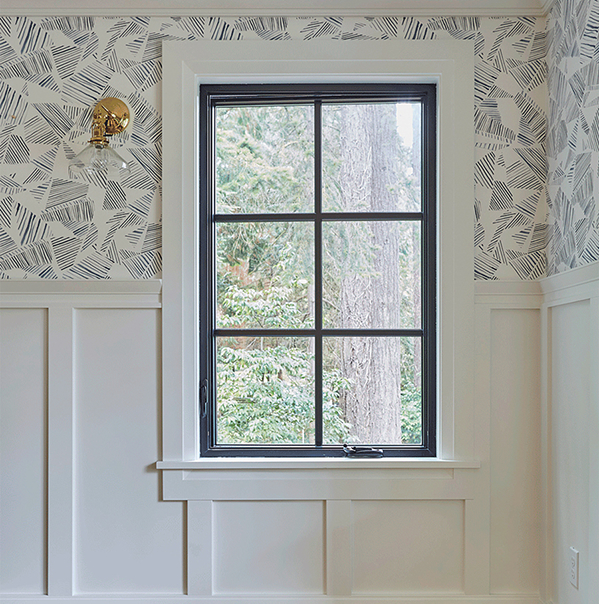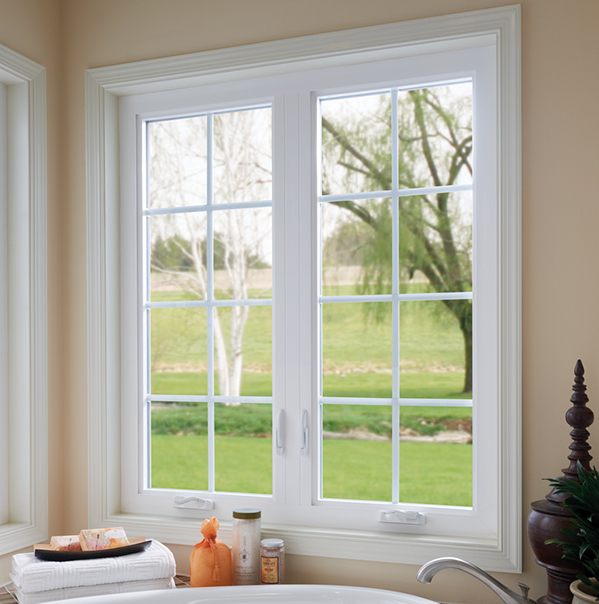Replacement Casement Windows and New Casement Windows
Enhance your home with our premium casement windows, designed to provide superior ventilation, energy efficiency, and unobstructed views. At LR Glass & Window, we offer top-quality casement windows that combine functionality with aesthetic appeal, perfect for homes in Lebanon, Oregon, and surrounding areas.
What Are Casement Windows?
Casement windows are hinged on the side and open outward like a door, operated by a crank mechanism. This design allows for maximum ventilation and clear views, making them a popular choice for various rooms, including kitchens and living areas.
Benefits of Casement Windows
- Superior Ventilation: Casement windows open fully, allowing for optimal airflow and fresh air circulation throughout your home.
- Energy Efficiency: The tight seal created when closed enhances insulation, reducing energy costs by preventing drafts and heat loss.
- Unobstructed Views: With no muntins or dividers, casement windows provide clear, wide-angle views of the outdoors.
- Easy Operation: The user-friendly crank mechanism ensures smooth opening and closing, even in hard-to-reach areas.
- Enhanced Security: Multi-point locking systems offer increased security, making casement windows a safe choice for your home.

Ideal Locations for Casement Windows
Casement windows are versatile and can be installed in various areas of your home:
- Kitchens: Perfect for above countertops or sinks, providing ventilation and ease of use.
- Living Rooms: Allow natural light and fresh air to enhance your living space.
- Bedrooms: Offer a combination of security and ventilation for a comfortable environment.
Casement windows, often found over kitchen sinks, offer the flexibility to arrange them in beautiful combinations. These windows open with a hand crank located on the inside, with the window sash hinged on the side like a door. The screens for casement windows can be removed from the inside of the house and are optional, providing convenience and ease of use.
Unlike sliding windows that move up and down, casement windows open like doors with hinges on the side. You use a crank to open and close them, which is pretty straightforward. Some of these windows come with a latch to make sure they stay closed and can't be opened from the outside, adding extra security. There's also a spring inside the frame that holds the window open when you crank it out all the way, keeping it steady.
A casement window fully opens by swinging the sash out away from the building on its hinge. This is the best way to get good air flow of all the different types of windows available today. If that is your priority, then casement windows are the best option for you.
If you want to have good air-flow in your home, a casement window is a good option, but there are a few consideration you need to keep in mind. With the sash open, the casement window acts as a scoop to bring wind into your home. If your house is tightly closed in by neighbors, the angle of the casement windows may allow you to bring in breezes. The sash effectively scoops in air and sends it into your house. But this can also work against you if prevailing breezes tend to go in the other direction. Breezes that flow over the top of casement sashes will largely not be sent into the home. The casement sash blocks the wind if it faces the wrong direction.

In comparison to other styles of windows, particularly slider windows and double-hung windows, casement windows have a number of benefits. Screens that are on the inside of the window are simpler to clean. You will appreciate having the option to remove the screen from the inside of your home if the window is on the second or higher story.
The sash of the majority of casement windows is opened and closed using a crank. This crank frequently develops issues such as handles breaking, gears freezing up, becoming rusted, or even breaking. Slider windows have even fewer mechanical components that could potentially fail as they only have a sliding sash and a latch. As with any mechanical parts, the crank assembly on casement windows should be maintained by keeping it dry, applying oil as necessary, and most importantly, not being used without care.
Casement windows cannot accommodate ordinary window air conditioner systems. Because the sliding sash may be closed to completely enclose the top of the window unit, double-hung windows are the best possible fit for window A/C systems. Additionally, casement windows cannot be opened all the way so you can install the A/C window unit. Although you cannot install standard window air conditioners, you can spend a little extra money and get a casement or slider air conditioner that is designed for them.
Casement leading edges are vulnerable to wind damage, which can cause them to completely fall off or cause a sail-like effect. Considering how easily the sashes can be caught by the wind, you should be very careful to close your casement windows in strong winds. This is not a particularly an uncommon occurrence either. Wind gusts can cause the hinges on casement windows to break.
Maintenance Tips for Casement Windows
To keep your casement windows functioning smoothly and looking their best, follow these maintenance tips:
- Regular Cleaning: Clean the glass and frames periodically to prevent dirt buildup. Use a soft cloth and mild detergent for best results.
- Lubricate Hardware: Apply lubricant to the crank mechanism and hinges annually to ensure smooth operation.
- Inspect Seals: Check weatherstripping and seals for wear and replace them as needed to maintain energy efficiency.
Be mindful of the local wind patterns. Your home's casement windows may sustain damage more frequently if they are on the windward side than if they are on the leeward side.




